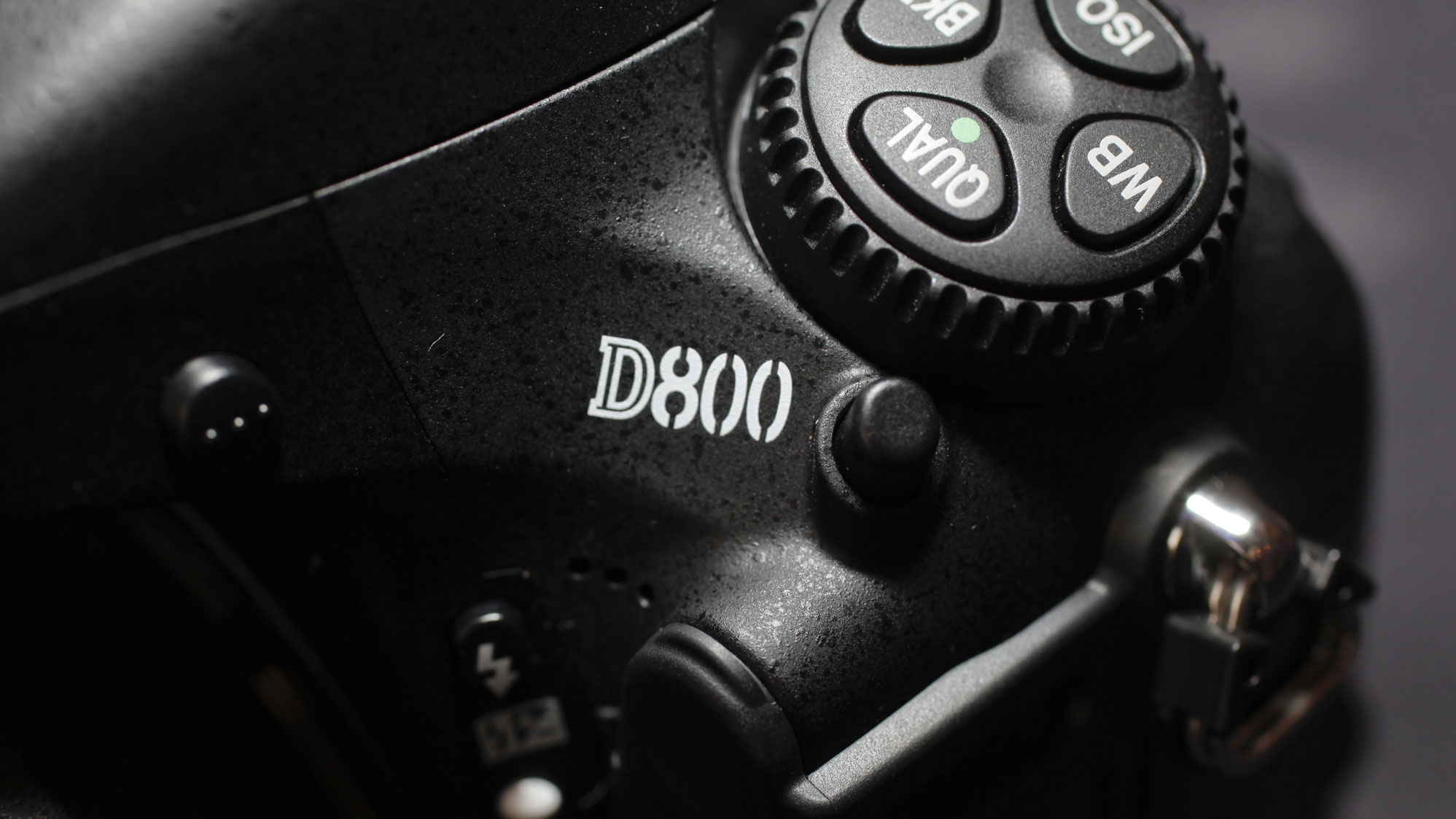Why you can trust TechRadar
We shoot a specially designed chart in carefully controlled conditions and the resulting images are analysed using DXO Analyzer software to generate the data to produce the graphs below.
A high signal to noise ratio (SNR) indicates a cleaner and better quality image.
For more more details on how to interpret our test data, check out our full explanation of our noise and dynamic range tests.
We have compared the Nikon D800 against the Nikon D700, Nikon D4, Canon EOS 5D Mk III, Canon EOS 5D Mk II and Canon EOS 1Ds Mk III.
JPEG Signal to Noise Ratio
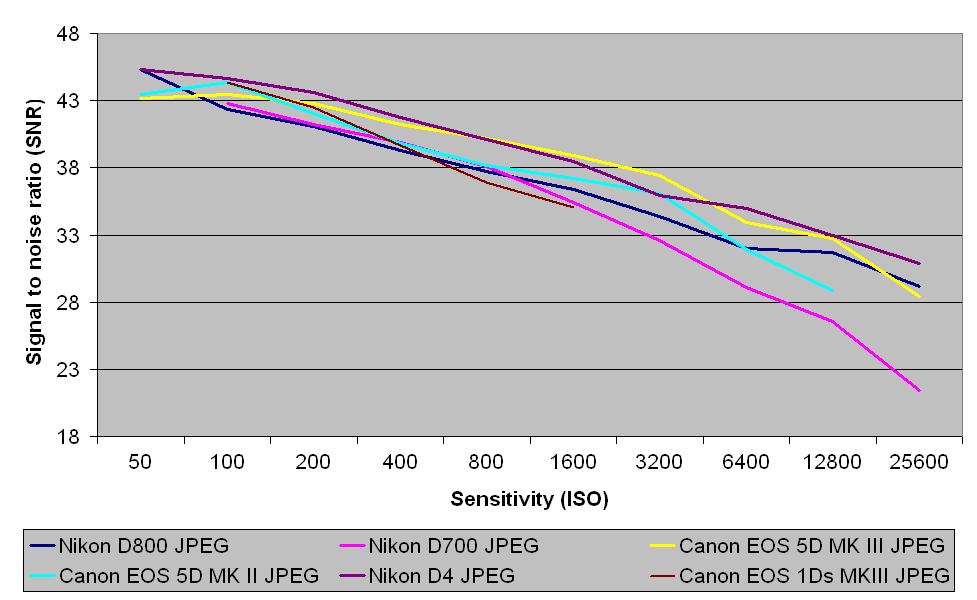
JPEG images from the Nikon D800 have a signal to noise ratio that compares well against, but cannot quite match, that from the Nikon D4 and Canon EOS 5D Mk III. At lower sensitivities results compare closely to Nikon D700, however from a sensitivity of ISO 800 there is a definite improvement.
Raw signal to noise ratio
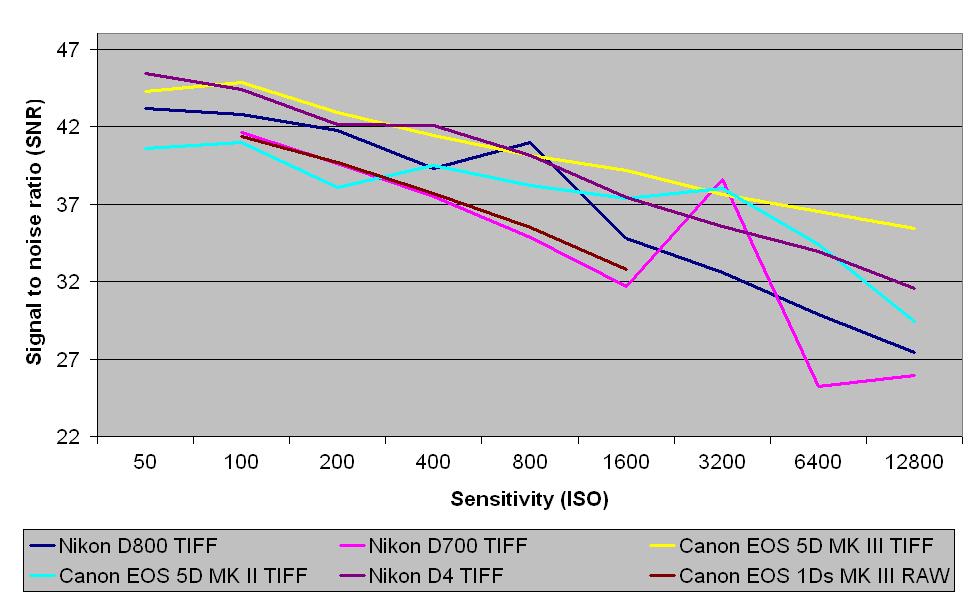
TIFF images (after conversion from raw) show that the D800 handles noise well at lower sensitivities and the results compare well against the Nikon D4. Above ISO 3200 noise becomes more of an issue.
JPEG dynamic range
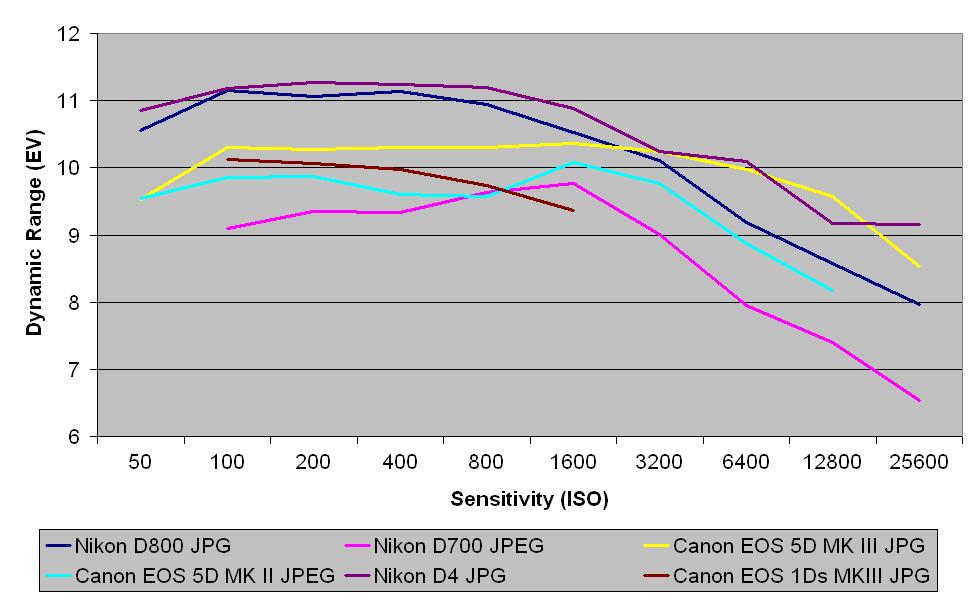
This chart shows that the Nikon D800's JPEG files have a high dynamic range only just beaten by the Nikon D4. Compared to the Nikon D700, the results show a big improvement across the sensitivity range. At ISO 3200 the Canon EOS 5D Mk III just over takes the dynamic range of the D800.
Sign up for breaking news, reviews, opinion, top tech deals, and more.
Raw dynamic range
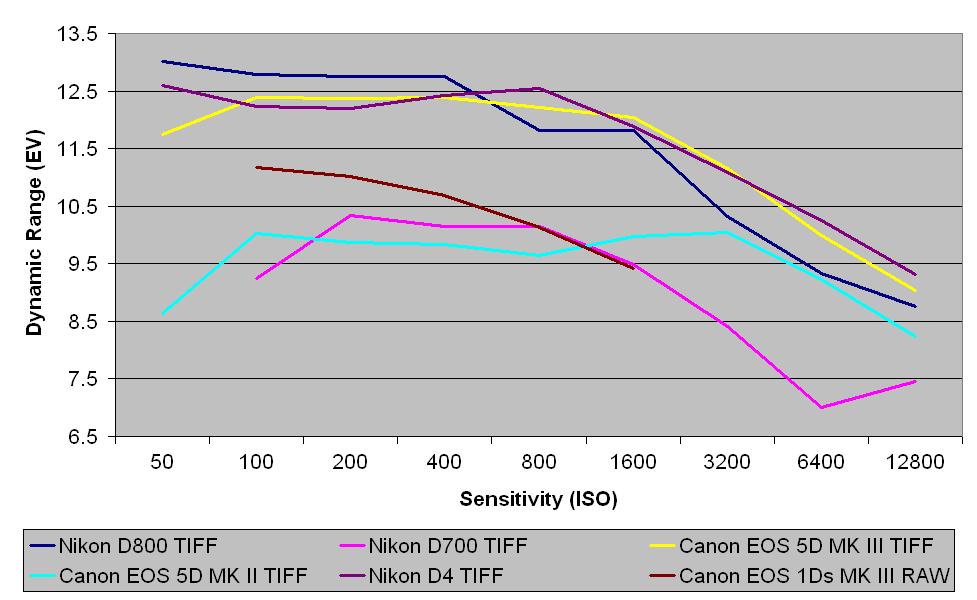
The D800's TIFF files (after conversion from raw) score some of the highest dynamic range results that we've seen from a DSLR, just beating the Nikon D4 and showing a huge improvement over the Nikon D700. At the lower end of the sensitivity scale, the D800 is the clear leader, but by ISO 800 the Canon EOS 5D Mk III takes the lead.
